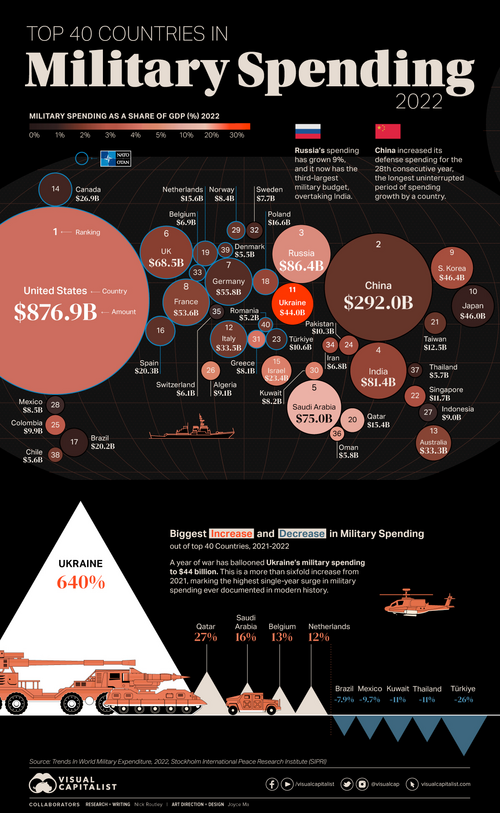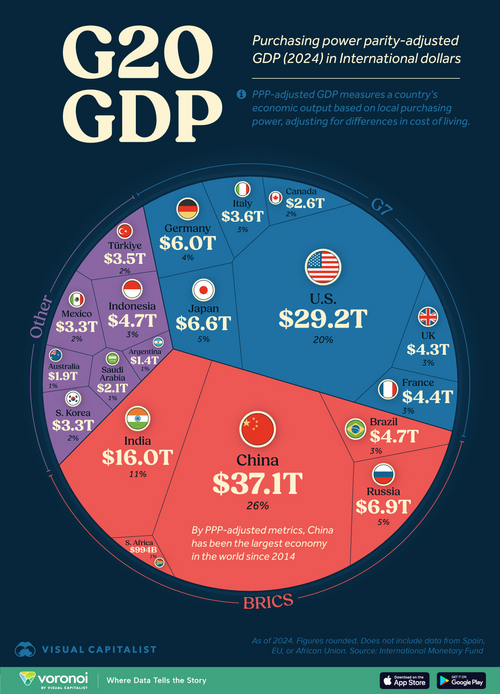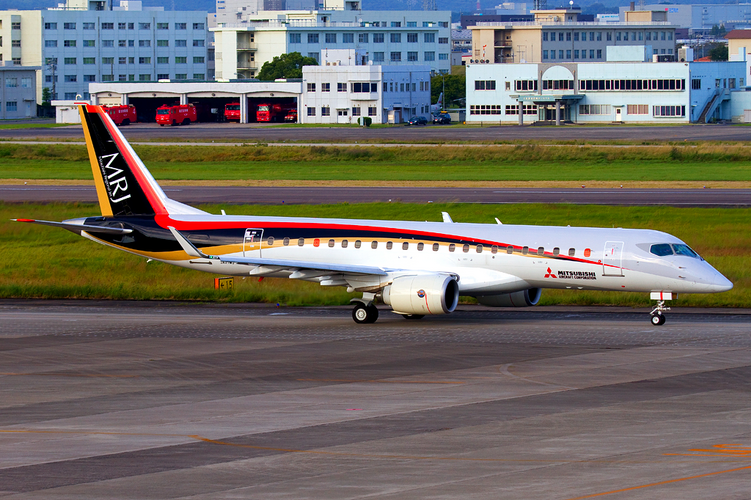red admiral
ACCESS: Top Secret
- Joined
- 16 September 2006
- Messages
- 1,818
- Reaction score
- 2,409
The real world is not about nationalism, is about business.That's not inviting India to join Tempest, it's inviting India to hire BAE Systems to consult on AMCA.



The only people I've seen acting like India's join to GCAP is imminent are hindu nationalists. I've already discussed the business side of things and India is just objectively a bad partner for the program.The real world is not about nationalism, is about business.
Japan has stated that at a minimum of 100 airframes to replace the F-2 in around a 1:1 replacement, and I would imagine the UK and Italy are looking at around the same amount based on their Typhoon fleets.Japan has a very small market for aircraft because the Japanese economy is stagnant.
This wasn't a Japanese industry issue, this was a US industry issue and they aren't a factor in GCAP.The last fighter project they made was a a fiasco F-2. very few aircraft purchased at an exorbitant price.
The F-2 was the first 4.5+ gen with the first AESA radar. The J-10 didn't get an AESA till the J-10C in 2018, almost 20 years later.Compare to China J-10 and you see F-2 does not bring any advance to Japan.
They also like Japan still have a healthy defense budget that is still going to expand in the future.England also has an economy with little growth and Italy the same, compared to the USA, both economies are stagnant.
Why invite India for money when the Saudis are right there with likely much less demands for industry participation and smaller ties to countries like Russia?Why Invite India? money money money, money money money.
Cool, so India can sit on the sidelines until it's up for export and then buy airframes from there. There is absolutely 0 reason to bring India on in an sort of development partnership.Aviation is business, and selling is the best way to keep in business.
Fact 1-F-2 has lower production than J-10The only people I've seen acting like India's join to GCAP is imminent are hindu nationalists. I've already discussed the business side of things and India is just objectively a bad partner for the program.
Japan has stated that at a minimum of 100 airframes to replace the F-2 in around a 1:1 replacement, and I would imagine the UK and Italy are looking at around the same amount based on their Typhoon fleets.
This wasn't a Japanese industry issue, this was a US industry issue and they aren't a factor in GCAP.
The F-2 was the first 4.5+ gen with the first AESA radar. The J-10 didn't get an AESA till the J-10C in 2018, almost 20 years later.
They also like Japan still have a healthy defense budget that is still going to expand in the future.
Why invite India for money when the Saudis are right there with likely much less demands for industry participation and smaller ties to countries like Russia?
Cool, so India can sit on the sidelines until it's up for export and then buy airframes from there. There is absolutely 0 reason to bring India on in an sort of development partnership.

Rather it's about business moderated by politics.The real world is not about nationalism, is about business.
Japan has an elderly population and low birth rate, basically has no future.
MRJ was a failure they could not pay for the project
The serial number on the plane in the videos is 36011.No, to in case I sound rude, but that‘s a lack of understanding of the CHinese numerical system: 20 stands for J-20, the third digit for the x-th variant of that type (= for the J-20 demonstrators, 1 for the true prototypes, … 3 for the J-20S and 5 for the J-20A) and only the final, fourth digit shows the number built.
The real world is not about nationalism, is about business.
(...)
Aviation is business, and selling is the best way to keep in business. An economy that grows faster obviously will spend more in military stuff, more weaponry, and obviously in the next decade India will increase its military budget more than Italy, Japan or UK, sad reality but true.
It is better to deal with India one-on-one. By negotiating the best terms for themselves, the Indians will bury any multinational program, as it seems to me.
And India is terrible about military procurement. Case in point, that time that Dassault, with almost no customers for Rafale, basically offered them a complete Rafale production line, complete with everything that that entailed.The real world is not about nationalism, is about business.
aircraft programs need money.Rather it's about business moderated by politics.
India has nothing to offer GCAP. It's still at the asking for external support stage of developing its home industry. No outside partner is going to risk tying their critical projects to India's notoriously slow development cycles (cf Tejas with it's c35 year development). It is, however a potential customer for certain systems companies.
Moreover, India's ongoing association with the Russians will make technology sharing at the cutting edge somewhat difficult.
Attacking another country is just as much nationalism as bigging up your own.
If the UK and Japan have so little to offer, why the assertions they must be about to let India join? Isn't AMCA supposed to fill the IAF next-generation heavy fighter role?
The fact is there is precisely zero indication in the UK that the UK, or the other GCAP business partners, are interested in India as a partner on GCAP, whereas there is considerable indication that they are interested in Saudi.
It already is a joint venture, amongst three highly developed nations with a history of advanced aircraft projects (not only their own initial 5th or 6th generation programmes but also major experience with the only mass produced 5th generation fighter in the world), with the potential for another member (Saudi Arabia) who can and will actually throw money at something to get it (even if the main design/production elements are already divided up).The reality is no money an aircraft program will be cancelled; joint ventures are designed to help to finance them, the Indian economy will grow more per year than England or Italy or Japan.
time will tellIt already is a joint venture, amongst three highly developed nations with a history of advanced aircraft projects (not only their own initial 5th or 6th generation programmes but also major experience with the only mass produced 5th generation fighter in the world), with the potential for another member (Saudi Arabia) who can and will actually throw money at something to get it (even if the main design/production elements are already divided up).
Meanwhile India has failed to keep at a 5th generation programme (Sukhoi/HAL FGFA) derived from a plane that already had much of the design work completed (Su-57), from a company and country that was desperate for sales and the money that would bring them.
This is before the many issues that any ‘made in India’ concerns (you can bet the present development and procurement agreements would be entirely unacceptable for India, and any changes for the present partner nations) or the corruption in military/government procurement is factored in - they might have the 4th largest defence budget, but I’d wager that the effective budget is much, much lower (especially when it has to interface with international concerns rather than mostly/purely domestic).
India is welcome to buy airframes from the partner nations, but I strongly doubt it will become a partner nation. And I even more strongly doubt that it’s lack of partnership (or even potentially sales) will sink this programme.
If you can't even get the name of the country right ....England tried to build many aircraft but they decided to build them in joint ventures.
The actual country GCAP should be trying to bring in, is the USA. Sell it as a near-term F-15C/F-22 replacement while NGAD gets the kinks worked out.
Requirements don't match.The actual country GCAP should be trying to bring in, is the USA.

HOW TF DID AVGAS GET IN A SINGLE-POINT FUELING TANKER?!?Even then it's burned France and Russia for sure. My friend's brother has answered more than one phone call from Indian Air Force techs, who after attempting to fuel a Su-30MKI with avgas, were trying to figure out why the AL-31FP decided to kill itself. The IAF ringed UAC Sukhoi's Begovoy office to scream at their engine design team in their confusion.
I'm actually thinking F-15E, if the GCAP has large weapons bays...The actual country GCAP should be trying to bring in, is the USA. Sell it as a near-term F-15C/F-22 replacement while NGAD gets the kinks worked out.
Long range, good stealth, high speed, uses CCAs... Sounds like most of the NGAD discussion so far. Just not made in USA.Requirements don't match.
Long range - indeed, but not *beyond second chain* level long, more like reliably first one.Long range, good stealth, high speed, uses CCAs... Sounds like most of the NGAD discussion so far. Just not made in USA.
I'm not sure the US can offer enough money to make dealing with ITAR worthwhile!The actual country GCAP should be trying to bring in, is the USA.
Id say Italy and the UK have been tied on that point considering both produce Eurofighter together and have worked together for a very long time, i do agree that Italy alone cannot produce much (MB-346FA Is still a decent plane) but It Is true that we Need the Flying demo and i Hope It Is soon finishedLong range - indeed, but not *beyond second chain* level long, more like reliably first one.
For US, that's wasted size in this case, just simplified PLRF targeting.
Which is a big no, PLRF became decisive factor on the theater.
Good stealth - as it appears from outside, it's more of moderate, as for 2030s.
For a big aircraft in US context, PCA requirements apply. GCAP won't be P in a peer.
It is built by nations that can hardly afford to develop or field premier stealth, nor they can absorb risks of penetrative missions by themselves anyways.
High speed - let's see how high, I am doubtful due to conflicting requirements (UK and especially Japan requires loiter). Recent renders show a lot of wing.
Finally, everything 2020s onwards uses CCAs(it's basically smart home level feature, being ironic), it isn't much of a push. Though CCAs may end up harder to integrate into a non-native system.
It is just a different aircraft for different countries. Maybe could've made sense for USN, but carrier requirement is again ironically the one lacking (and USN needs new big bird faster).
Finally, GCAP really needs demonstrator to fly.
Eurofighter wasn't exactly a *quality execution* confidence builder, and that was 25 years ago.
Among gcap nations, only UK counted as a first tier aircraft developer, and it didn't develop new aircraft in a long while. Italy is very solid, but second tier. Japan is...well, decision to selfishly suppress F-2 in a longer run wasn't really a good one.
Why would selling GCAP to the US make it ITAR?I'm not sure the US can offer enough money to make dealing with ITAR worthwhile!
There was an issue on F-35 where data between BAE and the US was blocked until someone explained 'no, the Brits are sending us info'.Why would selling GCAP to the US make it ITAR?
And of course then UK, Italy and Japan all have their own equivalent arms exports legislation
Because the point I was replying to was on making the US part of GCAP development, not selling it GCAP. If the US is involved in the development of GCAP then everything it touches becomes subject to ITAR. The UK has a partial ITAR exemption, Italy and Japan don't.Why would selling GCAP to the US make it ITAR?
This is very very rationaleThe actual country GCAP should be trying to bring in, is the USA. Sell it as a near-term F-15C/F-22 replacement while NGAD gets the kinks worked out.
No I think the purposes of this thought experiment as a solution to the US airframe gap you have to assume ITAR being a non issue as initial conditions. This is a theoretical scenario so no need to burden it with the drag of bs like ITAR.Because the point I was replying to was on making the US part of GCAP development, not selling it GCAP. If the US is involved in the development of GCAP then everything it touches becomes subject to ITAR. The UK has a partial ITAR exemption, Italy and Japan don't.
The suggestion was the GCAP partners should bring in the US, not India, and the (baseless) argument to bring in India was to bring them in as a full partner, therefore the suggestion was to bring in the US as a full partner. You can change that point if you want, but I was answering the original one, not some theoretical one discarding US laws.No I think the purposes of this thought experiment as a solution to the US airframe gap you have to assume ITAR being a non issue as initial conditions. This is a theoretical scenario so no need to burden it with the drag of bs like ITAR.

 aresdifesa.it
aresdifesa.it
Well the article states that It will be used for GCAP pretty well so I suppose it will. Btw wasn't Britain alredy in the Airbus loyal wingman programme or am I mistaking?I suppose that the UK would join the program later on if if the loyal wingman is going to be used alongside GCAP? That would be good news if they did.
Yes they wanted but GCAP didn't have an loyal Wingman to Beginn withWell the article states that It will be used for GCAP pretty well so I suppose it will. Btw wasn't Britain alredy in the Airbus loyal wingman programme or am I mistaking?
Forgive me if I ask, but what do You mean with this? There is alredy the japanese loyal wingman project and the airbus one was supposed to be UK's one.Yes they wanted but GCAP didn't have an loyal Wingman to Beginn with
I meant in a common Sense that they all make one (or multiple) designs together and instead we see multiple countries doing there "own thing" right nowForgive me if I ask, but what do You mean with this? There is alredy the japanese loyal wingman project and the airbus one was supposed to be UK's one.
orgive me if I ask, but what do You mean with this? There is alredy the japanese loyal wingman project and the airbus one was supposed to be UK's one.
